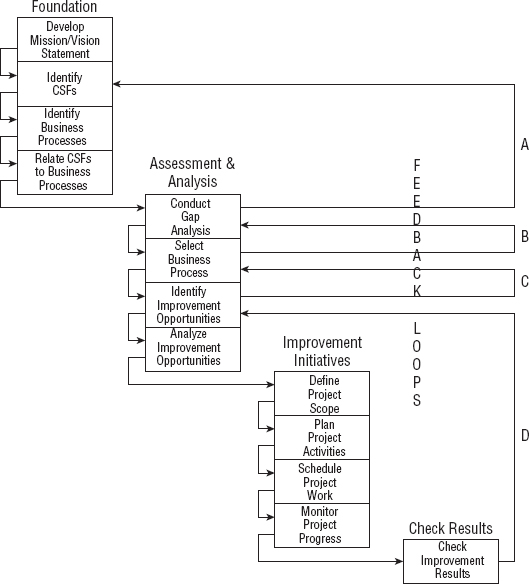Using the Continuous Process Improvement Model
As Figure 15-6 illustrates, CPIM is a four-phase model. I developed it specifically to be applied to the improvement of project management process and practice, but it can be applied to any type of business process. It is a way of life in organizations that want to attain and sustain a competitive position in fast-paced information-age industries.
Figure 15-6: Continuous Process Improvement Model

Phase 1: Foundation
The purpose of the Foundation Phase is to establish the overall structure of the CPIM. It begins at the highest level of definition in the organization and relates that to the processes that drive the business of the enterprise. It consists of the following four activities executed in sequence:
- Develop mission/vision statement.
- Identify CFs.
- Identify business processes.
- Relate CFs to business processes.
Develop Mission/Vision Statement
The mission and vision statements will come from the most recent version of the strategic plan of the enterprise. If such statements do not exist, they need to be developed. That development is outside the scope of this book. In their absence the CPIM has no foundation on which to be undertaken. Using mission and vision as the foundation of the CPIM assures that the PMLC models align with the purpose and direction of the enterprise.
Identify CFs
What are those few factors on which the success ...
Get Effective Project Management: Traditional, Agile, Extreme, Sixth Edition now with the O’Reilly learning platform.
O’Reilly members experience books, live events, courses curated by job role, and more from O’Reilly and nearly 200 top publishers.

